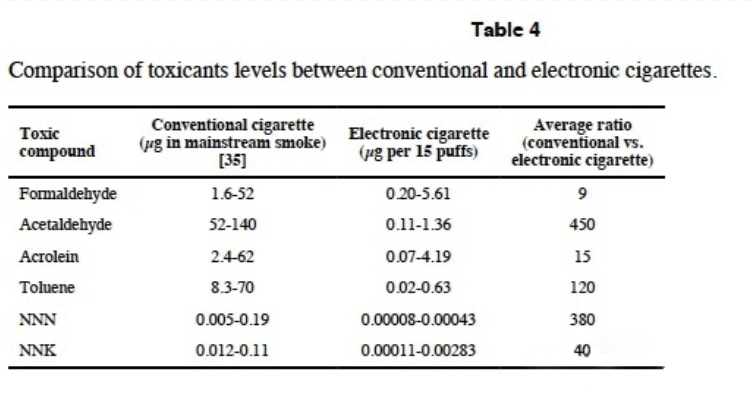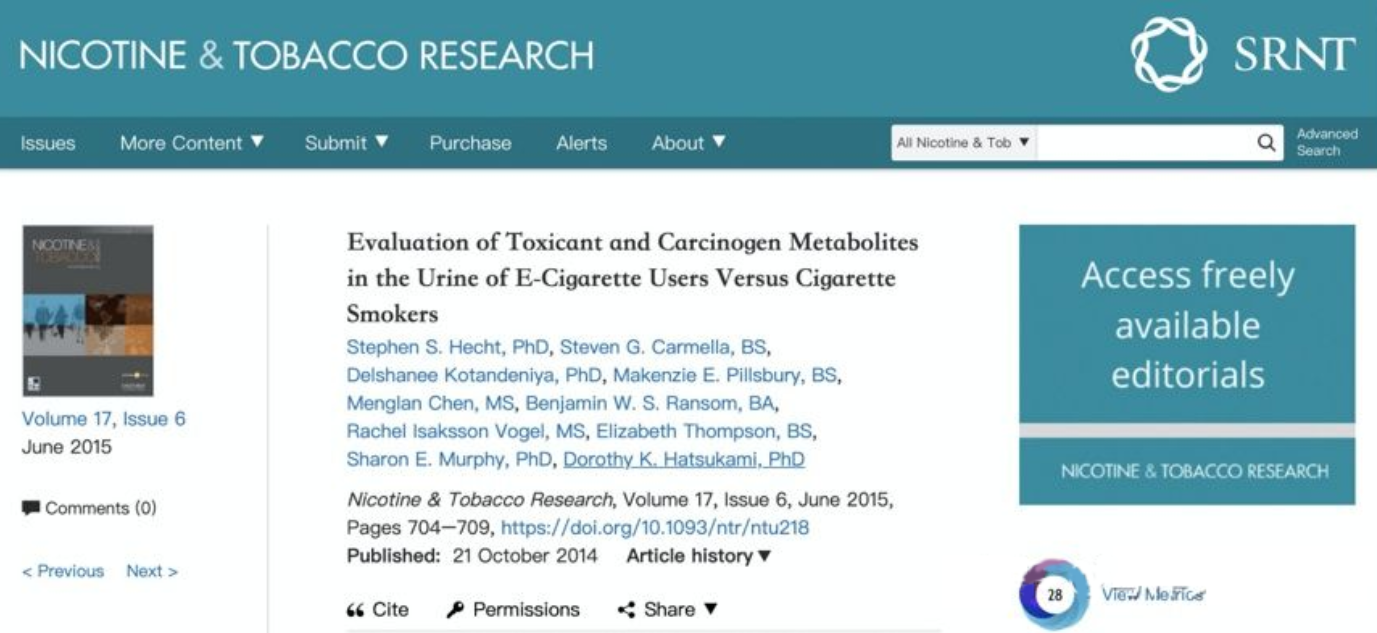Is the second-hand smoke of e-cigarettes harmful?
2022-08-27
It can not be said that it is completely harmless, but it is certainly much less harmful than the second-hand smoke of cigarettes.
As for the second-hand smoke problem of e-cigarettes, the current accurate statement of the cancer research center of the UK and the Centers for Disease Control and prevention of the United States is that there is no evidence that e-cigarettes have the second-hand smoke problem.
Cancer Research UK published a review in April this year, providing authoritative answers to questions such as the safety of e-cigarettes. The review points out that the significant harm reduction effect of e-cigarettes has become a widespread consensus among global public health institutions and researchers. Many studies have confirmed that the level of harmful chemicals exposed to smokers will be significantly reduced after they switch to e-cigarettes.
The research on nitrosamines is undoubtedly the most critical part of many studies. According to the list of carcinogens of the World Health Organization, nitrosamine is the most carcinogenic first-class carcinogen. Cigarette smoke contains a large number of tobacco specific nitrosamines (TSNAs), such as NNK, NNN, nab, nat... Among them, NNK and NNN have been identified by who as strong lung cancer causing factors and are the main carcinogens of cigarettes and the "culprits" of second-hand smoke.
Does electronic cigarette smoke contain tobacco specific nitrosamines? To solve this problem, Dr. goniewicz selected 12 high-volume electronic cigarette products on the market in 2014 for smoke detection. The experimental results show that the electronic smoke products at that time (mainly the third generation open large smoke electronic smoke) did contain nitrosamines in the smoke.
It is worth noting that the nitrosamine content in e-cigarette smoke is far lower than that in cigarette smoke. The data show that the NNN content of e-cigarette smoke is only 1 / 380 of the NNN content of cigarette smoke, and the NNK content is only 1 / 40 of the NNK content of cigarette smoke. "This study tells us that smokers who switch to electronic cigarettes can reduce the intake of cigarette related harmful substances." Dr. goniewicz wrote in his paper.

However, with the rapid development of the global e-cigarette market, e-cigarette products have also been rapidly iterated. The issue of electronic cigarettes discussed today is far more complicated than before. The latest research results on nitrosamines are from the Centers for Disease Control and Prevention (CDC).
In July 2020, the CDC issued a document pointing out that the content of the nitrosamine metabolite NNAL in the urine of e-cigarette users is extremely low, which is similar to the content of NNAL in the urine of non-smokers. This not only proves the significant harm reduction effect of e-cigarettes on the basis of Dr. goniewicz's research, but also shows that the mainstream e-cigarettes do not have the problem of second-hand smoke of cigarettes.
The study lasted for 7 years. From 2013, the epidemiological data on tobacco use behaviors, including use patterns, attitudes, habits and health effects, were collected. NNAL is a metabolite produced by the human body when processing nitrosamines. People inhale nitrosamines through the use of tobacco products or second-hand smoke, and then excrete the metabolite NNAL through urine.
The results show that the average concentration of NNAL in the urine of smokers is 285.4 ng / g creatinine, and the average concentration of NNAL in the urine of e-cigarette users is 6.3 ng / g creatinine, that is, the content of NNAL in the urine of e-cigarette users is only 2.2% of that of smokers.

In addition to nitrosamines, CDC also detected VOCs (volatile organic compounds) in e-smoke smoke.
VOCs are the general term of organic compounds that are volatile under certain conditions. The well-known harmful substances such as benzene and formaldehyde belong to the category of VOCs. The data showed that the content of VOCs metabolites in the urine of e-cigarette users was similar to that of non-smokers, while the concentration of VOCs in the urine of smokers was significantly higher than that of e-cigarette users and non-smokers.

"There is not enough evidence to show that e-cigarettes have the problem of second-hand smoke." The cancer research center of the UK stressed: "we still need to explore the long-term effects of e-cigarettes on the body, which is by no means overnight. However, a large number of studies over the past few decades have confirmed that tobacco is seriously harmful to human health, and e-cigarettes have significant harm reduction effects. There is no doubt about these two points."




